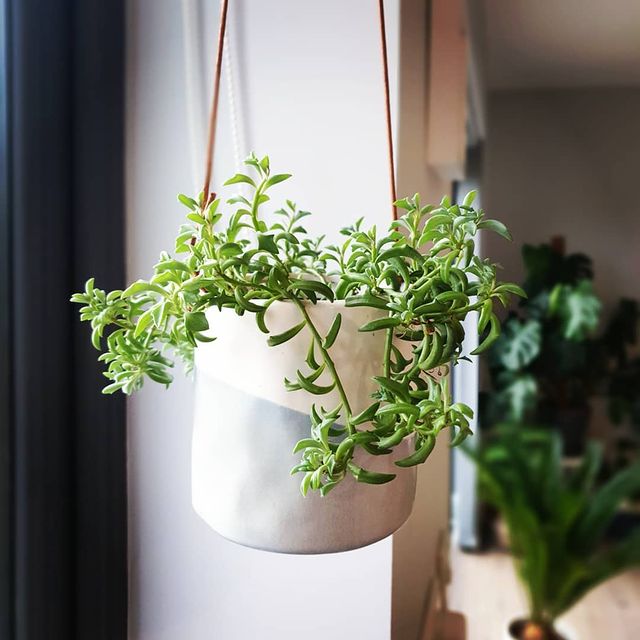In the enchanting world of succulents, the Senecio Peregrinus, commonly known as the ‘String of Dolphins’, stands out with its unique charm. This captivating succulent is cherished by plant enthusiasts for its distinctive appearance and easy-care nature. In this post, we’ll dive into what makes the Dolphin Succulent a must-have in your succulent collection, covering its appearance, hardiness, and essential care tips.
Senecio Peregrinus is a whimsical succulent that truly lives up to its nickname, as it resembles dolphins in ocean waves. This succulent is also known as Dolphin Necklace, Dolphin Plant, Flying Dolphins.

Its leaves are small, plump, and curved, closely resembling a pod of leaping dolphins. This playful visual effect is most pronounced when the plant is thriving and the leaves are lush and full. The Dolphin Plant also blooms with tiny, white or pink flowers that add a sweet fragrance to your indoor garden.
Native to the warmer climates of South Africa, Senecio Peregrinus is a hardy succulent plant that thrives in conditions similar to its natural habitat. It prefers temperate environments and is best suited for USDA hardiness zones 10a to 11b. While it’s fairly resilient, this succulent doesn’t tolerate frost or harsh direct sunlight well, so it’s important to protect it from cold temperatures and hard sunlight if grown outdoors.

The dolphin succulent is a type of trailing succulent, making it an excellent choice for hanging baskets or high shelves, where its vine-like stems can cascade beautifully. It’s a relatively fast grower, especially in the spring and summer, and can add a lively touch to your home with its dolphin-shaped leaves playfully dangling down.


Dolphin Succulent Care Tips:
- Lighting: This succulent loves bright, indirect light. Too much direct sun can scorch the leaves, while too little light can cause the ‘dolphins’ to lose their unique shape.
- Watering: Like most succulents, Senecio Peregrinus prefers a ‘water when dry’ method and thrives when using the bottom watering method. Water thoroughly when the soil is completely dry, and then let it dry out again before the next watering. Overwatering can lead to root rot.
- Soil: Use a well-draining soil to ensure proper drainage. Adding perlite or sand can enhance soil aeration.
- Feeding: During the growing season (spring and summer), you can feed your Dolphin Plant with a diluted, balanced, liquid succulent fertilizer about twice a year.

Senecio Peregrinus, with its delightful dolphin-shaped leaves, is not only a conversation starter but also an enjoyable succulent to care for. Whether you’re a seasoned succulent collector or just starting out, this charming plant is sure to bring joy and a touch of whimsy to your indoor garden.
Similar Topics in: Succulent Trends


Leave a Reply